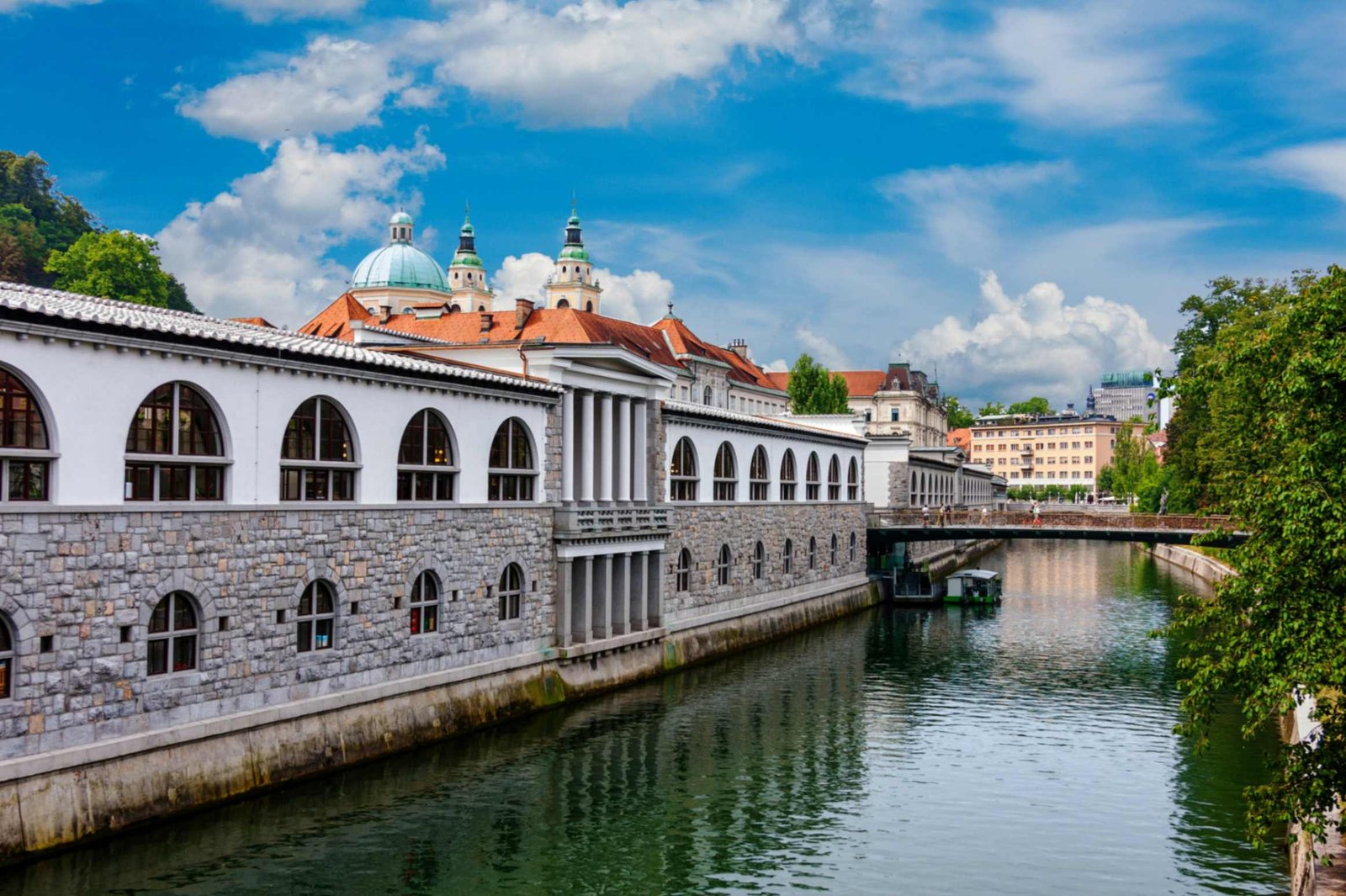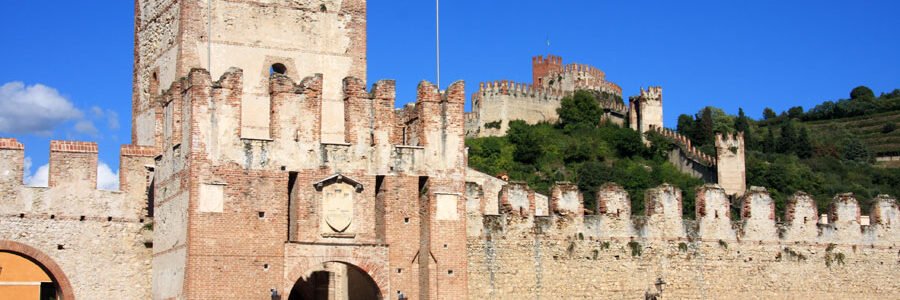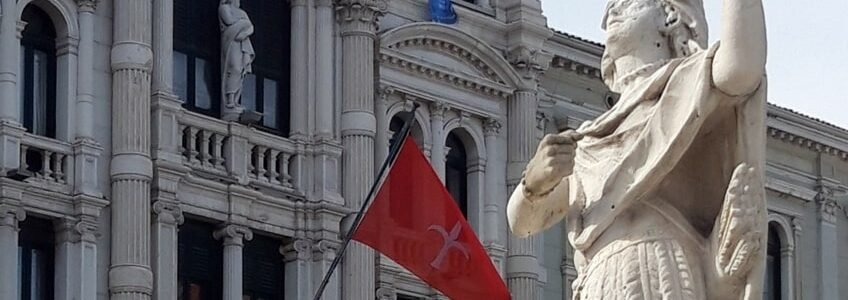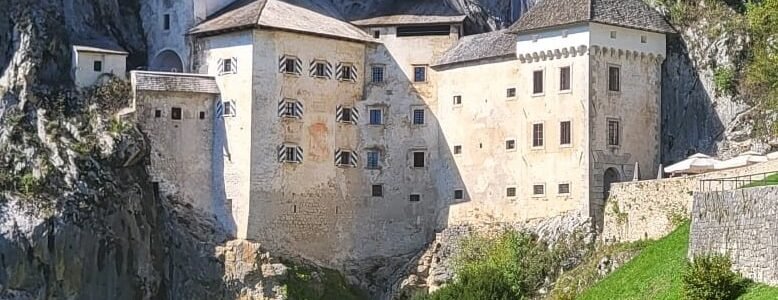What to see in Ljubljana
What to see in Ljubljana
What to See in Ljubljana
A City That Welcomes Without Announcement
Ljubljana doesn’t compete for attention. It invites it. Arriving here isn’t marked by grand gateways or massive boulevards, but by a shift in pace. The city unfolds in layers — the old and the new, the deliberate and the improvised. There’s a rhythm to it, slow and grounded, best felt along the Ljubljanica River. It winds gently through the center, lined with small cafés and willow trees that lean close to the water.
Over the River, Into the Story
The river is spanned by bridges, each with its own personality. The Triple Bridge, designed by Jože Plečnik, turns a crossing into an experience. A few steps away, the Dragon Bridge stands prouder, its green guardians weathered but enduring. Beneath these structures, life happens — tourists taking photos, locals on their way to work, students lost in thought. Every bridge carries more than people; it carries mood, memory, moment.
The Castle Above, the City Below
Perched on a hill that seems to grow out of the city itself, Ljubljana Castle has stood for centuries. The walk up is shaded and steep, but it’s part of the ritual. From the top, the view stretches far — on clear days, all the way to the Julian Alps. But even if the skies are grey, the castle rewards with its sense of detachment from the pace below. In the quiet courtyard, history feels more present than past.
Markets, Squares, and the Pulse of Daily Life
Descending into the Old Town, you move through stone streets that resist maps. Prešeren Square is the unofficial center — not because it’s the largest, but because everything passes through it. There’s a pink Franciscan Church, a poet cast in bronze, and music floating across cobblestones. Nearby, the Central Market bustles with real life: baskets of apples, jars of honey, handwoven goods that carry the scent of a slower world.
Where Architecture Becomes Emotion
Jože Plečnik didn’t just design buildings. He shaped experiences. His influence is everywhere — in the curve of a colonnade, in the placement of a bench, in the angles of light under stone arcades. His architecture was human-first, meant to be felt, not just seen. It’s this approach that gives Ljubljana its atmosphere: thoughtful, balanced, strangely calming. His touches around the riverbanks and the National and University Library define how locals move, rest, and look at their city.
Art That Doesn’t Ask for Permission
Just beyond the historic core, Metelkova rises — a self-managed cultural zone and former army barracks turned art commune. Every surface is covered in expression: murals, installations, mosaics, rebellion. It’s not curated for comfort, and that’s exactly the point. Metelkova doesn’t try to explain itself. It exists as Ljubljana’s raw nerve, pulsing with concerts, performances, and debates that often stretch late into the night. Somewhere between here and the galleries of the Museum Quarter, the city reveals its dual spirit — refined and unruly, side by side.
A Hub for Broader Journeys
Ljubljana’s central location makes it ideal for short getaways across Slovenia. Day trips are not an escape from the city — they’re a continuation of its rhythm. Just a couple of hours away, you can be walking around Lake Bled, exploring underground caves, or reaching the Adriatic coast. Many travelers, for example, take the transfer from Rovinj to Bled and pass through Ljubljana to split their journey. It’s this in-between quality that makes the city quietly indispensable.
Green at Its Core
One of Ljubljana’s most defining features is its relationship with nature. The city center is largely car-free, and people move by bike, foot, or electric transport. Tivoli Park, just a short walk from the core, feels like an extension of the city’s lungs. Wide gravel paths cut through forested areas, leading to fountains, sculptures, and tucked-away benches. Art exhibitions are often staged in the open-air gallery on Jakopič Promenade, where modern visuals meet old trees.
Flavors That Reflect a Region
Food in Ljubljana isn’t defined by trends. It’s defined by its roots. Many restaurants focus on hyper-local ingredients: trout from the Sava, mushrooms from nearby forests, herbs grown on rooftop terraces. Dishes like žganci, jota, and štruklji are presented with quiet pride, often in cozy spaces that blur the line between home and restaurant. Slovenian wines, still under the radar internationally, offer clean, mineral tones from regions like Goriška Brda or the Vipava Valley. Meals here aren’t loud — they unfold slowly, like the city itself.
Evenings of Quiet Light
As night falls, Ljubljana becomes softer still. Streetlamps reflect off the river. Musicians begin setting up near the bridges. Outdoor seating reappears at restaurants, and the air shifts with the scent of woodsmoke or grilled vegetables. People move more slowly. There’s no pressure to be anywhere in particular. Just being in the city is enough. You might walk past the opera house, past bookstores that stay open late, or take a final detour up to Nebotičnik, a pre-war skyscraper offering rooftop views and dessert under the stars.
History That Lingers Without Shouting
For those looking to understand the deeper currents of Ljubljana, the Museum of Contemporary History provides quiet insight into the wars, uprisings, and decisions that shaped modern Slovenia. These are not heroic narratives, but intimate ones. Diaries, letters, personal items fill the rooms — reminders that every city is built not just by architecture, but by memory.
Your Place in the Narrative
Ljubljana doesn’t demand that you check off sights. It asks only that you stay long enough to hear its tone shift. That might happen while watching locals play chess in the park. Or while pausing to read a quote from Prešeren etched into stone. Or while noticing how the light bends between Plečnik’s pillars at sunset.
If you’re looking for updates on festivals, exhibitions, or curated walking routes, the official Ljubljana Tourism Board site offers excellent resources for those who want to move with purpose while staying spontaneous.
What to See in Ljubljana
Ljubljana isn’t a city of monuments—it’s a city of details. Cobbled streets, bridges with stories, quiet corners by the river, and locals who still greet each other in the market. It’s easy to walk, easier to stay, and surprisingly hard to forget.
Those arriving via transfer from Bled to Ljubljana often notice the shift right away—from alpine stillness to a small capital full of life, but never in a hurry.
- Crossing from lakes to the Istrian coast
- Arriving from Bled into the capital
- Heading toward Zagreb after your visit
- Straight from the airport to the city center
- Returning to nature from Ljubljana
- All routes between cities in one place
A city best explored on foot
The old town is closed to traffic, which makes walking along the Ljubljanica river a relaxed experience. The castle on the hill is worth the climb or funicular ride, while Metelkova offers a different kind of culture—more improvised, less polished, but just as real. Cafes stretch into the streets, and there’s always a bench where you can pause and take it in.
- Good for travelers who like a slow-paced city with personality
- Everything is within walking distance—no need for a car
- Ideal as a first stop in Slovenia or a final one before flying out
- Mix of historic, artistic, and everyday local life
- Suitable for solo visitors, couples, and small groups
No rush, no noise—just presence
What to see in Ljubljana depends on how long you choose to look
To explore local events, galleries, and museums, visit the Official Ljubljana Tourism Site.
RECENT POSTS
- How to get from Vienna to Trieste November 22, 2025
- How to get from Vienna to Bled November 9, 2025
- How to get from Trieste to Zagreb October 21, 2025





























































Leave a Comment